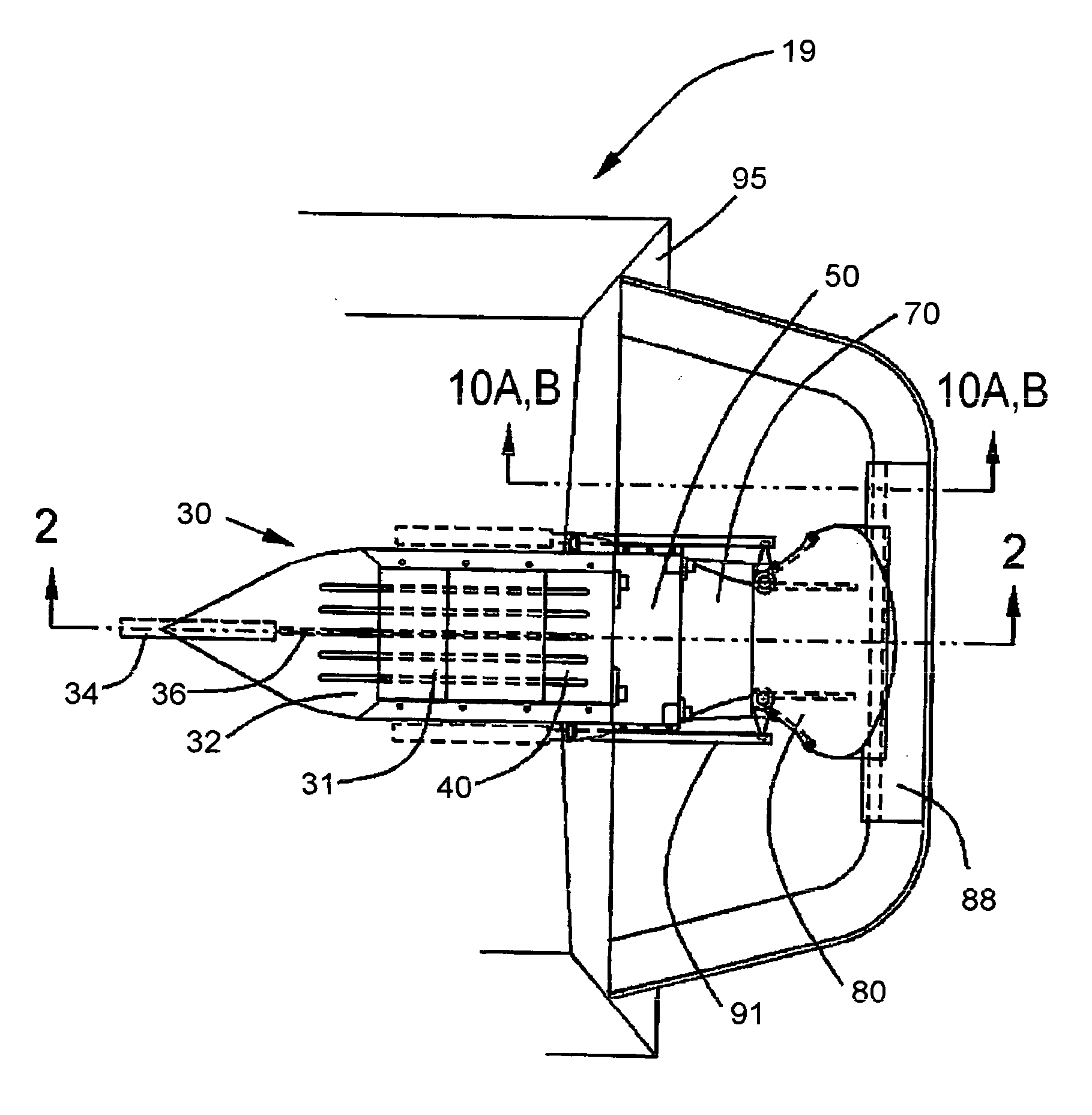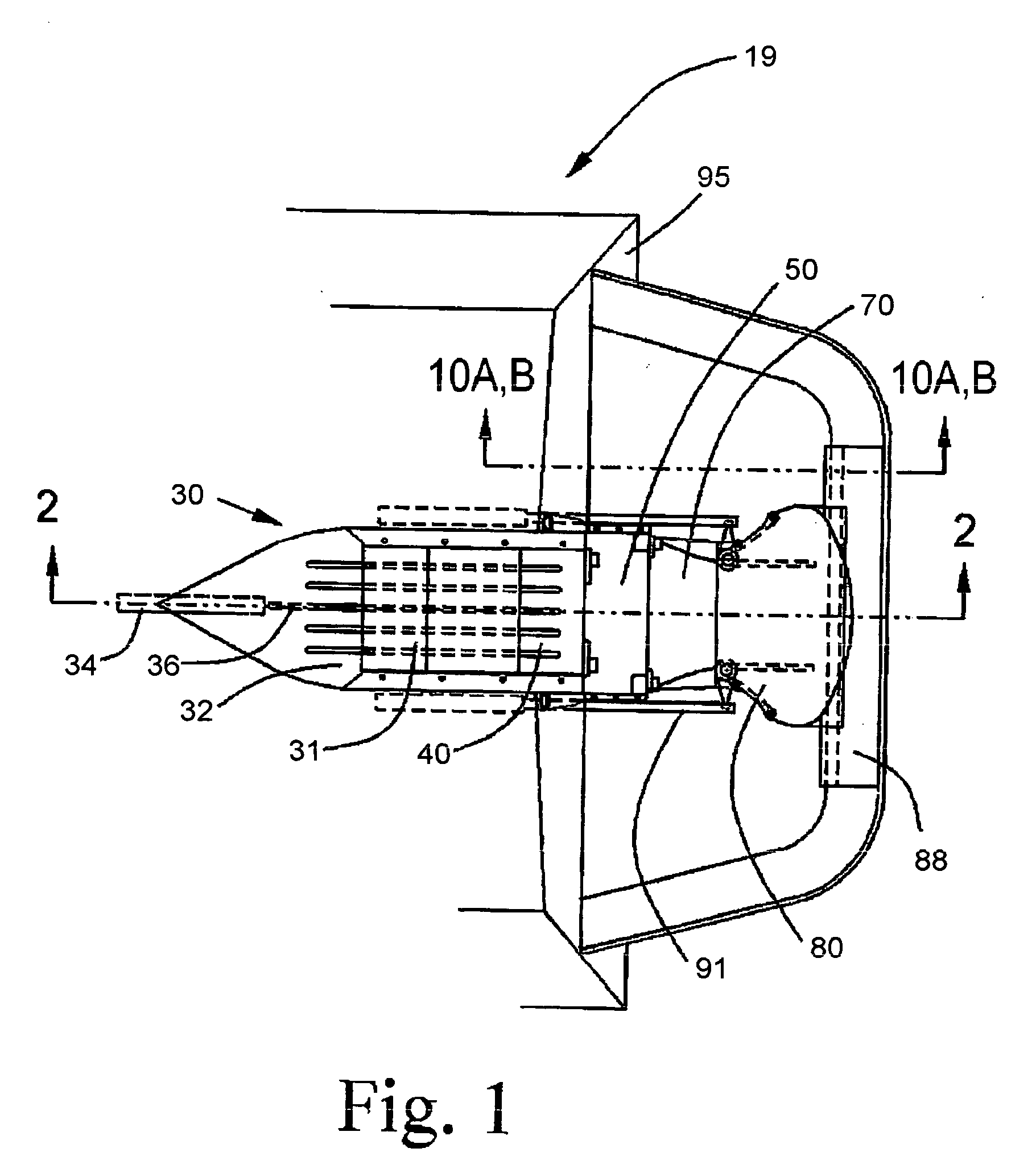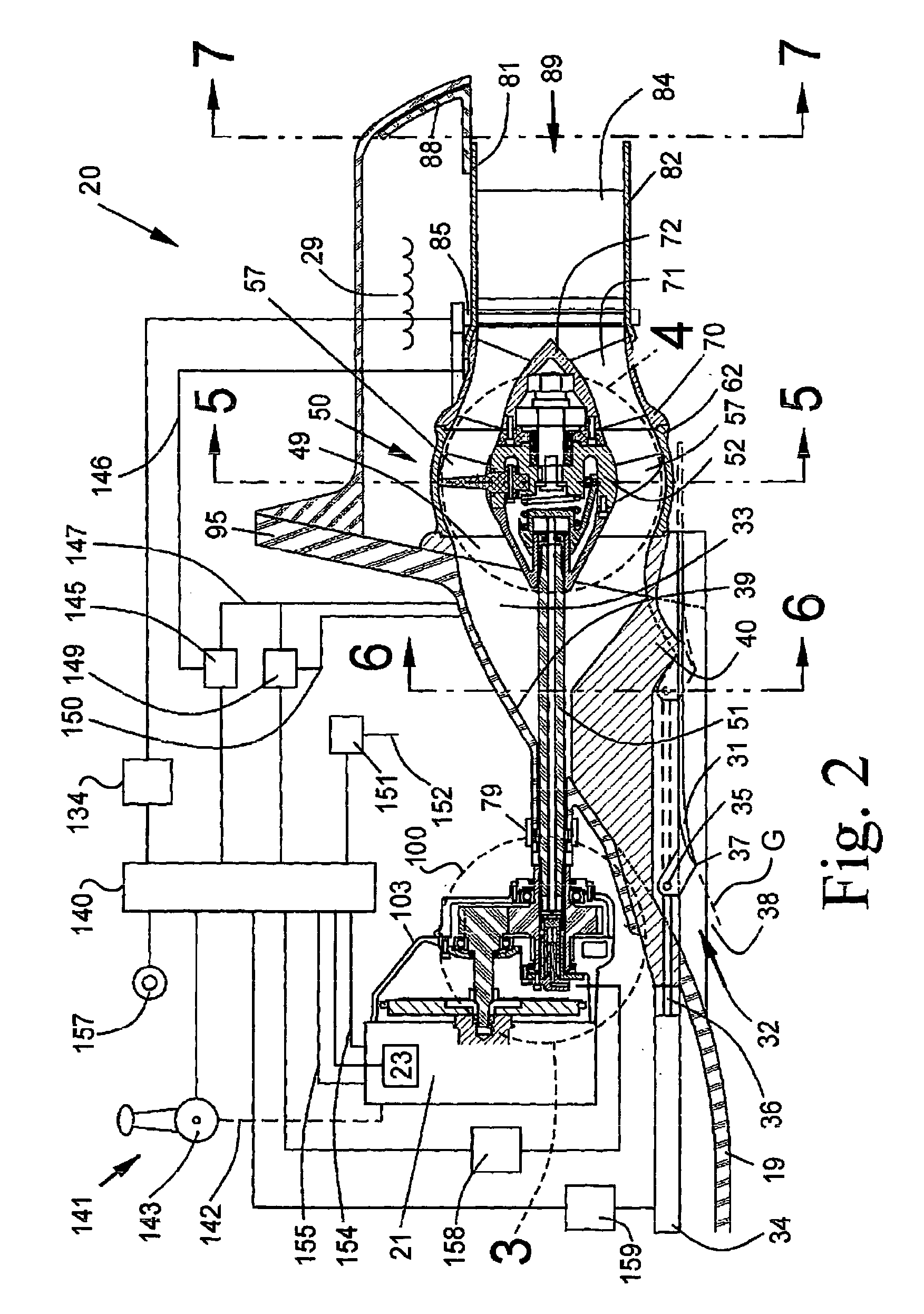Variable marine jet propulsion
a technology of variable displacement and jet propulsion, which is applied in the direction of marine propulsion, vessel construction, water acting propulsive elements, etc., can solve the problems of system for trash removal, and achieve the effects of reducing the jerk of watercraft starting, efficient operation, and maintaining engine efficiency
- Summary
- Abstract
- Description
- Claims
- Application Information
AI Technical Summary
Benefits of technology
Problems solved by technology
Method used
Image
Examples
Embodiment Construction
[0047] In the accompanying FIGS. 1-13, there is shown an improved marine jet propulsion system, generally referred to as 20, designed to achieve higher propulsion efficiency, greater maneuverability, and better injury prevention features than currently available marine propulsion systems.
[0048] The system 20 includes a variable water inlet duct 30 for admitting water into the system 20, a variable-pitch spherical pump 50 capable of receiving and pumping a relatively large amount of incoming water, and an adjustable, large variable rectangular discharge nozzle 80 capable of forcibly exiting the water pumped by the pump 40 to propel the watercraft 19 through the body of water 29. A microcontroller 120 controls the variable inlet duct 30, the variable pitch spherical pump 40 and the variable discharge nozzle 80. By simultaneously controlling the variable inlet duct 30, the variable-pitch spherical pump 50, the large variable rectangular discharge nozzle 80, the propulsion efficiency o...
PUM
 Login to View More
Login to View More Abstract
Description
Claims
Application Information
 Login to View More
Login to View More - R&D
- Intellectual Property
- Life Sciences
- Materials
- Tech Scout
- Unparalleled Data Quality
- Higher Quality Content
- 60% Fewer Hallucinations
Browse by: Latest US Patents, China's latest patents, Technical Efficacy Thesaurus, Application Domain, Technology Topic, Popular Technical Reports.
© 2025 PatSnap. All rights reserved.Legal|Privacy policy|Modern Slavery Act Transparency Statement|Sitemap|About US| Contact US: help@patsnap.com



